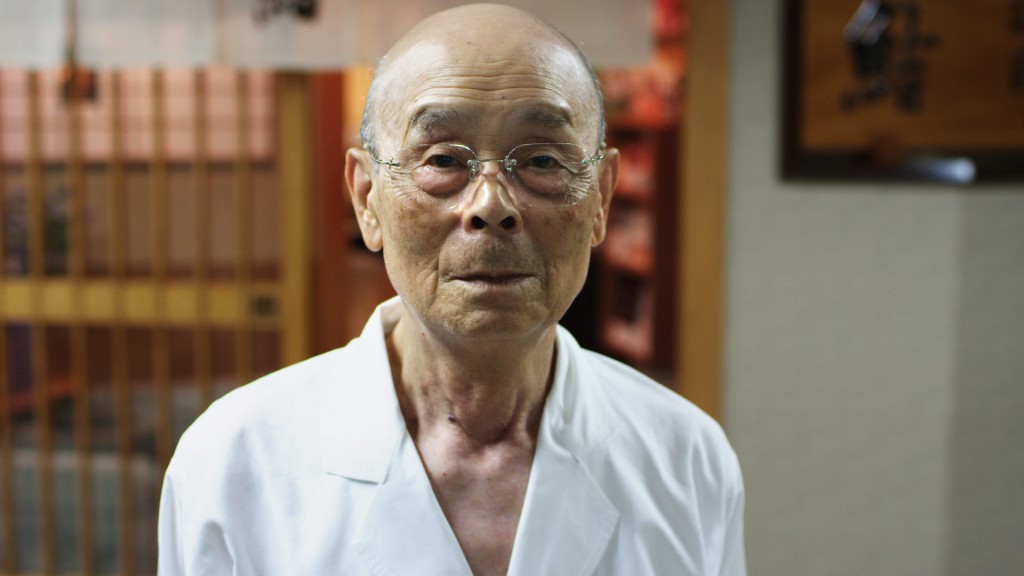“The pursuit of excellence is gratifying and healthy. The pursuit of perfection is frustrating, neurotic and a terrible waste of time.” Edwin Bliss
Here’s my theory: every movie has at least one line of dialogue that’s worth remembering. Something that causes you to pause and reflect long after the movie’s ended. Cinematic wisdom. My friends know this theory of mine and inevitably, as we sit and watch a movie, there comes a moment when we all agree, that was the quote!
I recently watched a documentary that was filled with wisdom that can be applied to many disciplines called Jiro Dreams of Sushi. It’s a documentary about 85-year-old Jiro Ono, considered by many to be the world’s greatest sushi chef. His 10-seat, sushi-only restaurant (Sukiyabashi Jiro) is tucked away in a Tokyo subway station. It’s the first restaurant of its kind to be awarded a prestigious three-star Michelin Guide rating.
 Photo courtesy of Magnolia Pictures.
Photo courtesy of Magnolia Pictures.
Jiro has dedicated his life’s work to sushi and elevated it to a culinary art form. Taking something as simple as sushi and transcending its humble beginnings is a blend of what the Japanese call Kaizen (constant improvement) and Shokunin Kishitsu (craftsman spirit). Jiro’s journey to perfect sushi is one of daily repetition and constant improvement. It’s definitely not the sushi you pick up on your way home from the grocery store deli.
The “aha moment” happened when Masuhiro Yamamoto, a Japanese food critic and writer who’s visited every sushi, soba, tempura and eel restaurant in Tokyo, shared the Five Traits that designate a master sushi chef. As I listened, I kept thinking how easily this translates to the discipline of photography:
They take their work very seriously and consistently perform on the highest level. An apprenticeship takes time. When you work for Jiro, he teaches you for free. But you must endure the training (10 years or more). You must be patient, dedicated and passionate—working hard as if you can’t fail. There is no Plan B because that’s the the mindset to fail Plan A. Of course you will fail, over and over again, but the lesson is in striving to continue until you achieve success.
Professional photographers are consistent. They make the magic happen for every client. Learning to consistently perform at this level is essential. That means showing up with a willingness to do whatever it takes to get it right, at every level of your career.
They aspire to improve their skills. It’s important to develop a taste that is more highly refined than your guests. In order to make delicious food, you must eat delicious food. You need to develop a palette capable of discerning good and bad. Without good taste, you can’t make good food. If your sense of taste is lower than your customers, how will you impress them? Jiro sets the standard for self-discipline. He’s always looking ahead, never satisfied with his work and always trying to find ways to make the sushi better, or to improve his skills. He has the same routine every day and is not afraid of working long hours. That is the spirit of Shokunin.
Many times, creativity comes down to showing up every day and practicing your craft. Creating a space for the magic to happen where discipline, skill and passion all come together in a single moment. Your clients don’t know what they don’t know. It’s up to you to elevate your photography to be the best it can be. Never settling for good enough. As you practice this mindset, you will continually improve. Yes, it’s hard, demanding and frustrating at times, but eventually, you will be rewarded for your efforts. It takes years of sacrifice and hard work to get there.
Cleanliness. If the restaurant doesn’t feel clean, the food isn’t going to taste good.
The perception your clients have of you and your business is everything and permeates every interaction. Many of us may argue that a cluttered workspace helps declutter a creative mind. But we’re talking about your place of business. The space where you engage with your clients and showcase your personality and your photography. Those imperceptible little details all subliminally come together and set the tone for your client’s perception of you and your work. The presentation of your work is a factor in whether or not they will want to make an investment in you.
Impatience. Yamamoto shares that a key attribute of great chefs is impatience. He said, “They are better leaders than collaborators. They’re stubborn and insist on having it their way.”
Collaborative teamwork is different than leading a team whose goal is realizing your vision. Ultimately, the best photographers are uncompromising leaders in achieving that vision.
You must be passionate and a perfectionist. The movie opens with Jiro Ono saying, “Once you decide on your occupation, you must immerse yourself in your work. You have to fall in love with your work. You must dedicate your life to mastering your skill. That’s the secret of success and is the key to being regarded honorably.”
It’s important to distinguish perfection from excellence. Many would argue that however perfection is described, it can never be achieved. Excellence is continually striving to improve. The best photographers are those who are only defined by themselves. Not by what everyone else is doing. None of us know what we’re truly capable of until we dedicate ourselves to constant improvement.
“There is nothing noble in being superior to your fellow man; true nobility is being superior to your former self.” Ernest Hemingway
To truly appreciate Jiro’s dedication, in the end, you simply need to enjoy his sushi. And that is the ultimate lesson we can learn from this movie. And now I’m hungry for sushi, how about you?



